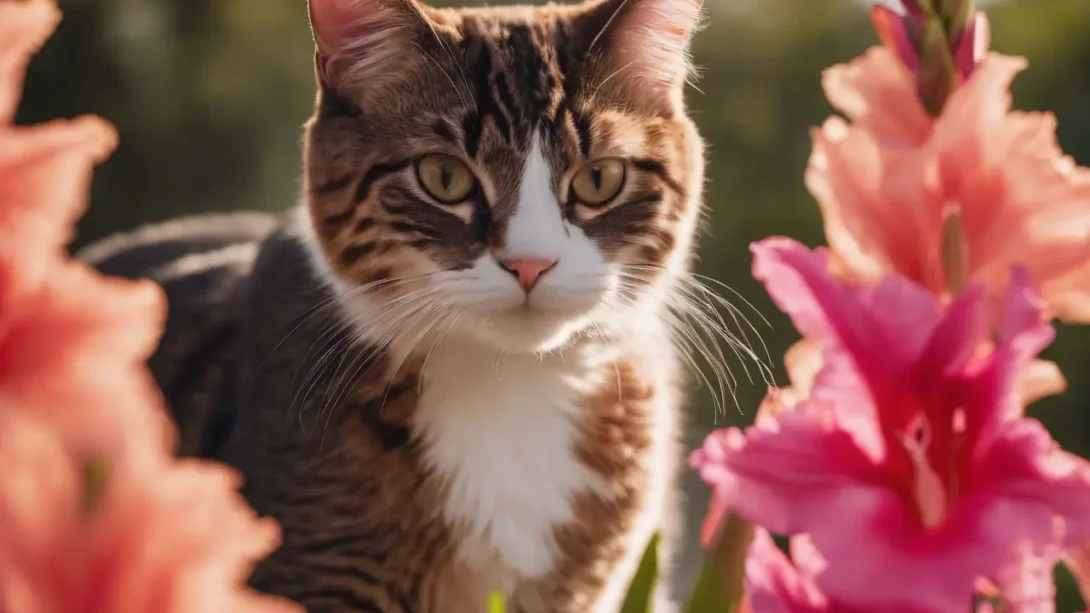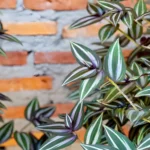Gladiolus, known for their striking, tall spikes of colorful flowers, are a favorite among gardeners and flower enthusiasts alike. These vibrant blooms not only add a splash of color to gardens and bouquets but also hold a charm that captivates many. However, for cat owners, the allure of adding such beauty to their home comes with a crucial consideration: the safety of their feline friends. Understanding which plants are safe and which could pose a danger is essential for creating a pet-friendly environment. This article delves into the specific concerns regarding gladiolus and their toxicity to cats, providing vital information for pet owners.
Gladiolus
Gladiolus, belonging to the Iridaceae family, comprises approximately 260 species, ranging from eye-catching garden varieties to wild species. These perennials are admired for their spectacular show of flowers along tall stems, known as spikes. The flowers can be found in almost every color imaginable, from soft pastels to vibrant reds and purples, making them a popular choice for both garden displays and cut floral arrangements. Originating from South Africa, the Gladiolus genus has spread across the globe, revered for its beauty and the dramatic flair it adds to any setting.
Toxicity of Gladiolus to Cats
While gladiolus flowers are a feast for the eyes, they harbor a hidden risk for our feline companions. It is essential for cat owners to know that all parts of the Gladiolus plant are considered toxic to cats. The toxicity is primarily due to the presence of certain alkaloids and glycosides within the plant, substances that can adversely affect a cat’s health if ingested. Although the level of toxicity is generally considered to be moderate, the specific risk to an individual cat can vary based on factors such as the amount ingested and the cat’s overall health. Recognizing the potential danger gladiolus poses is the first step in preventing accidental poisoning and ensuring the safety of our beloved pets.
Symptoms of Gladiolus Poisoning in Cats
When a cat ingests part of a gladiolus plant, several symptoms may arise, signaling potential poisoning. These symptoms can include vomiting, drooling, lethargy, and a noticeable decrease in appetite. In more severe cases, cats might experience diarrhea, abdominal pain, and even heart abnormalities. The onset and severity of these symptoms largely depend on the quantity of gladiolus ingested. Early detection of these signs is crucial for the timely treatment of affected cats. Pet owners should closely monitor their cats if they suspect any interaction with gladiolus plants and prepare to act swiftly if symptoms develop.
First Aid and Treatment
If you suspect your cat has ingested gladiolus, the first step is to remove any plant material from their mouth, if safely possible, and to prevent further ingestion. Offer your cat fresh water to help dilute any ingested toxins. Immediate consultation with a veterinarian is imperative, even if symptoms have not yet appeared. Provide the veterinarian with as much information as possible, including the part of the plant ingested, the approximate quantity, and the timing of the incident.
Veterinarians may induce vomiting or administer activated charcoal to prevent further absorption of the toxins. In more severe cases, symptomatic treatment, such as fluid therapy and medications to control symptoms like vomiting, may be necessary. The specific treatment plan will depend on the severity of the poisoning and the symptoms presented by the cat.
Preventing Gladiolus Poisoning
The best approach to prevent gladiolus poisoning is to avoid growing these plants in areas accessible to cats. If gladiolus are a must-have for your garden or home, ensure they are placed in a location that your cat cannot reach. Consider using physical barriers or cat repellents to deter your feline friend from exploring areas where gladiolus or other toxic plants are present.
For cat owners who love gardening, numerous non-toxic alternatives can safely coexist with pets. Plants such as catnip, spider plant, and zinnias offer the joy of gardening without the risk to your cat’s health. Researching plant toxicity before introducing new flora into your home or garden is always recommended, ensuring a safe and harmonious environment for all your family members, including the four-legged ones.
Conclusion
The beauty of gladiolus in a garden or as a cut flower can hardly be overstated, with their myriad of colors and elegant stature adding unmatched charm to any setting. However, the safety of our feline companions must always take precedence. Understanding that gladiolus are toxic to cats is essential for pet owners who wish to enjoy these plants without compromising the health and well-being of their pets. Recognizing the symptoms of gladiolus poisoning and knowing the steps to take in case of an emergency can make a significant difference in the outcome for a poisoned cat.
Creating a pet-safe environment does not mean giving up on gardening or the beauty it brings. With a wide variety of non-toxic plants available, cat owners can still indulge in their hobby while ensuring the safety of their pets. Prevention is key, and being informed about which plants are safe and which are not is part of responsible pet ownership.
Always consult with a veterinarian if you have concerns about plant toxicity and the health of your pets. They can provide guidance and information tailored to your specific situation, helping you create a safe and enjoyable living space for your entire family. The harmony between our love for plants and our commitment to our pets’ safety is achievable with the right knowledge and precautions. By choosing pet-friendly plants and being vigilant about potential dangers, we can enjoy the best of both worlds in our homes and gardens.



